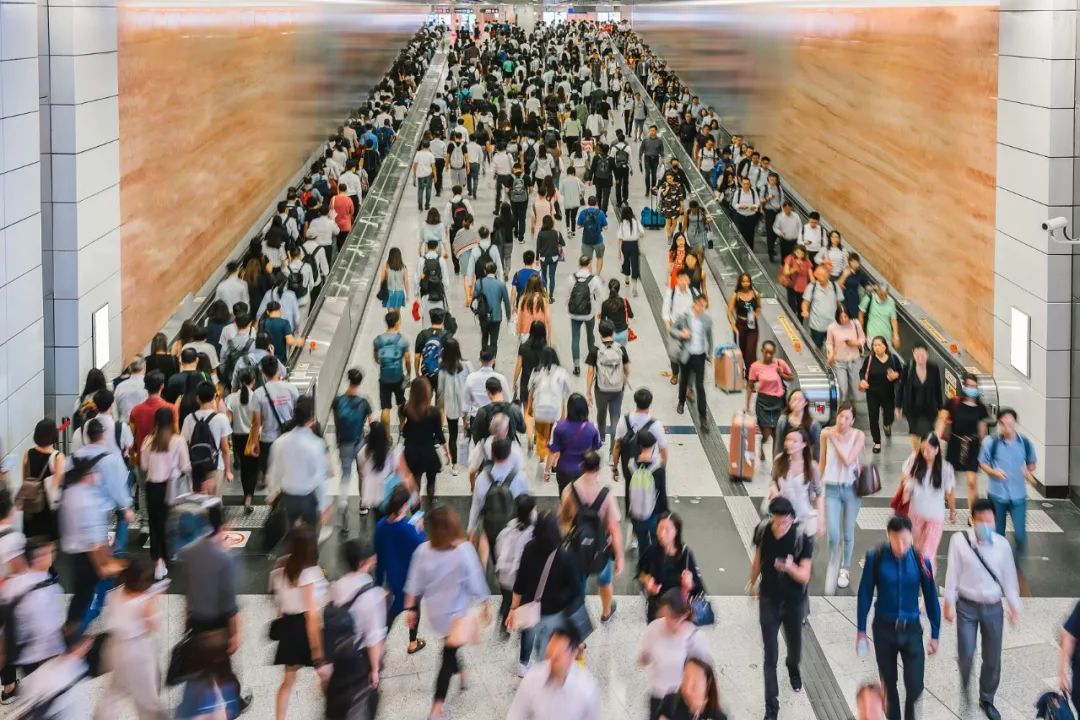SECTIONS Guanghua Insights
Dual circulation, China’s new model of development, has been the talk of the town. As the country enjoyed a year-on-year expansion for the first nine months of 2020 as the first major economy to return to growth amid the Covid-19 pandemic, the world is curious about how much impact dual circulation has on that performance.
“That effect has yet to fully kick in.” The answer from Professor Chen Yuyu with Peking University’s Guanghua School of Management seems unexpected and reasonable at once. Made public for the first time in May and highlighted by the central leadership in the following months, the dual circulation strategy needs more time to achieve its effect, and the third quarter data do not show. However, Chen stresses that the new strategy’s impact on China’s economy will be profound.

IDEAL EXPORT GROWTH
The dual circulation concept reveals China’s view on export and its sector of economy concerning overseas regions as well as its connections with the outside world — in other words, how the country sees overseas investment and domestic investment. Tellingly, the name hints that both circulations are important, and one complements the other, which is at the most direct level of the concept.
First, let us interpret the signals from the data for the first nine months. China’s foreign trade of goods totaled 23.12 trillion yuan (3.46 trillion U.S. dollars) in the first three quarters, up 0.7 percent year on year, reversing declines for the first time in 2020. Its foreign trade of goods declined by 0.2 percent in Q2 and increased by 7.5 percent in Q3. The country’s export hit 12.71 trillion yuan, up 1.8 percent; import hit 10.4 trillion yuan, down 0.6 percent. Put together, the country registered a trade surplus of 2.3 trillion yuan.
One crucial signal from this set of data is that China’s import-export performance has been excellent amid the pandemic and in step with its GDP growth. While Q2 saw a net decline, Q3 increased by 7.5 percent. Meanwhile, China’s Q3 GDP net growth increased to 4.9 percent, which refers to its real growth. With a 3.3 percent growth from CPI considered, China's GDP growth in nominal terms might as well surpass seven percent.
Before the 2008 financial crisis, China’s export growth far outstripped its GDP growth, which reflects a global trend then. With the onset of the financial crisis, rapid export growth across the world was disrupted and dragged back to the GDP level. This phenomenon shows that the world economy was deep in globalization, and its reliance on export could hardly be expanded further.
Western economic analysts at the time held the idea that export growth must be in line with GDP growth in order to ensure the healthy development of globalization in the long run. Meanwhile, China’s export growth also slowed down in the decade following the financial crisis, with its share of GDP declining from 36 percent to 17 percent, which was about the ideal proportion fit for a major economy like China.
It is under such a circumstance that China’s central leadership suitably brought forward “dual circulation” that emphasizes exploring domestic demand potential as well as maintaining high-level opening up. Under this strategy, the country’s export does not necessarily need to pursue higher-than-GDP growth in order to maintain high-quality development — keeping pace with GDP growth is enough. With the pressure of competition in the global market, this strategy will help China’s export firms achieve high-quality development by reducing costs, boosting technical power, and supplying the overseas markets with better products.
This strategy will not only help better integrate the Chinese economy with the world and win the overseas market but also expand into the global market and stimulate the domestic economy. Therefore, keeping export growth in pace with GDP is a must for the country to implement “dual circulation” and achieve a deeper opening up. We should continue the momentum of Q3.
As far as the foreign-related sector is concerned, we should also pay attention to capital inflow. The inflow of overseas capital since May has been more than expected, which was more or fewer thanks to China’s efficiency in stemming from the Covid-19 epidemic and achieving economic recovery. However, China still needs to coordinate its monetary policy and foreign exchange policy and reform its foreign exchange and capital account mechanisms in order to maintain a higher-level opening up in various stages in the future.

POTENTIAL GROWTH CAPACITY
At a second level, “dual circulation” entails further supply-side reform in order to boost China’s long-term development and growth capacity. This requires us to detach ourselves from short-term economic data and look further.
In its previous monetary policy execution report, China’s central bank said the country’s economic growth rate was expected to return to potentially normal growth levels. Its governor Yi Gang recently stressed that the central bank would continue to pursue a prudent monetary policy that is flexible, appropriate, and targeted while striking a balance between stabilizing growth and forestalling risks. The country’s monetary policy must be kept at a proper level of intensity in order to make its economy return to “potentially normal growth levels.” What are the potentially normal growth levels? It is part of a country’s long-term strength — sustainable growth levels determined by a country’s strengths from long-term resources and structures.
Economic data for the first three quarters reveals the short-term impact of the Covid-19 pandemic and the China-U.S. trade dispute, which might affect expectations and make the country’s economy run at a rate lower than the potentially normal levels. In response, short-term monetary policy and fiscal policy tools are needed to quickly steer the economy back to its path of long-term development. That is why the country needs to continue its supply-side reform in order to consolidate and enhance its capacity for long-term potential growth.
Domestic circulation-wise, long-term measures for consolidation include better governmental efforts to build a clear and close tie with firms, maintain market order, unleash market vitality, reform state-owned enterprises, support private businesses, and carry out long-term policy and structural policy to boost potential growth. The huge domestic market is a crucial force to push forward China’s economy, and China needs to do a lot to continue reforms, lower market trade costs, and reduce improper governmental interventions so as to fully unleash the power of the market and demand.
In the meantime, there is another pushing force from opening up. The pressure from opening up to the world and entering the global market force firms to constantly increase efficiency. Flowers grown in a greenhouse cannot withstand harsh weather, and shutting down a country to protect its own firms is unacceptable. It’s better to let them learn and grow from hardships in fierce global competitions. On the other hand, the flow of international capital and trade will bring forth innovations in business models and technology that are of great importance to boosting long-term economic growth potential.
SUPPORT FOR RETAIL
A crucial keyword in the “dual circulation” strategy is demand, which includes domestic consumption demand and investment demand.
In the first three quarters, retail sales of consumer goods went down 7.2 percent year on year. Official analysis attributed the decline mainly to the negative effect of the Covid-19 epidemic on consumption in the first several months while the retail sales of consumer goods in recent months already began to climb up. Currently, China’s retail sector has shaken off the Covid-19 impact and is in recovery.
When people’s income levels do not increase or even decline, consumers’ spending will also decrease except on daily necessities such as food. More efforts to stimulate residents’ consumption demand are needed in the long run. Such policies should be highly precise to encourage and support people to buy things. In this regard, the academic circle has been calling for the establishment of a social security network to provide comprehensive services to help citizens cope with risks in health, education, low-income jobs, and other aspects. With its coverage surpassing a certain scope, citizens will be less worried and more willing to spend more and reserve less for deposits, shoring up the country’s consumption.
As far as investment demand is concerned, China is experiencing rapid technological changes and different technology environments need different investments. In the past, investments in China were mostly in infrastructure and real estate, but now investments should target hi-tech manufacturing and services, sectors that bring forth fresh financing demand. Traditional investments in the old days required mortgages like factories and land for banks to grant loans. Without these things, how could the service industry obtain funds needed for development? For hi-tech manufacturing, huge, fixed input in research and development is a must. Therefore, more efforts are needed to support investments in high technologies necessary for the initial phases in order to innovate the capital market.
Simply reducing interest rates and creating money is not enough for China to ignite the passion for investment. Instead, the country must make concrete efforts to develop its capital market step by step in order to provide better financing tools for investments in high technology and emerging service industries that have huge potential.
China’s fixed-asset investment went up 0.8 percent year on year in the first three quarters. However, look closer and one will see that investments in infrastructure and real estate increased by 0.2 percent and 5.6 percent respectively, but investment in manufacturing went down 6.5 percent, albeit at a rate of 5.2 percentage points lower from the first half. Investment in manufacturing was not ideal mainly because China’s manufacturing sector has been experiencing transformation and upgrade, and some innovative capital market tools are needed to support hi-tech investment amid current uncertainty.
Compared with developed countries, China’s infrastructure is still lacking, which also means ample space for more investments. However, infrastructure investment takes longer to see returns, and innovative, long-term capital market tools are also necessary to help local governments, communities, and state-owned enterprises and institutes to complete such investments by solving the issue of longer return cycle and relying on the market to predict and evaluate infrastructure demand in the future.

DYNAMIC VIEW ON DATA
While we have finished talking about the three levels of the dual circulation strategy, it is also helpful to view China’s economic data in a dynamic fashion and understand that China’s economy has basically returned to a growth rate that is close to the potentially normal levels. The country’s performance in Q4 should be solid as long as it can maintain the current momentum. The year-on-year growth for Q1 next year will inevitably be shocking — possibly to the effect of nine percentage points higher — because this year’s Q1 data was too dismal.
The year 2020 is a crucial point in the medium- and long-term plans for China’s economy. In general, most of the country’s targets, such as poverty relief, have been met. The sudden strike of Covid-19 might have its impact on the country fulfilling its goal of doubled income by 2020, but China’s economy should be able to reach its goals in the long run.
For a country’s economic development, it is more important to reduce future uncertainties, and thus policy is needed to manage people’s expectations. In other words, when many are uncertain about the direction of development, policy changes, and the changes in international situations in the future, they will delay and adjust their investment and expansion plans, which is not good news for economic development. Therefore, it is crucial to set down China’s long-term development goals more clearly and accurately. The upcoming 14th Five-Year Plan (2021-2025) will do exactly that.
MORE INSIGHTS FROM PROFESSOR CHEN YUYU
Prof. Chen Yuyu on China’s First Half 2020: Economy On the Mend
Prof. Chen Yuyu Analyses Current State of China’s Economy
China’s Lockdown Bill: More than Worth It
Prof. Chen Yuyu Interprets China’s 2020 Economic Tasks
*International Media Relations Contact: media@gsm.pku.edu.cn
 Programs
Programs